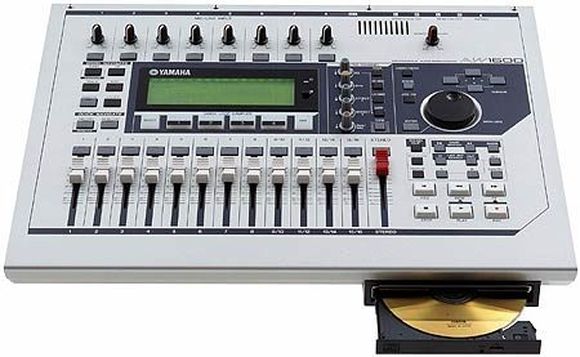6. Multitrackers as Mixers?
As mentioned before, technological advancements have brought many innovations to musicians. For those who can't quite get along with computers in the studio, multitrackers or portable hard disk recorders have become an alternative. Not too long ago, portable digital studios were highly sought after by hobbyists. While such standalone solutions have become less common, they still exist. It's only natural that the integrated mixing console function can be used for other purposes. Regardless of the media used for recording in the end—hard drives, flash storage, CDs, or others—multitrackers can generally be put to good use. However, it's a good idea to take a closer look at the mixer section within these devices. Especially for live applications or in the rehearsal room, the question arises whether there are enough channels available. In the studio, it's less problematic when only one or two microphone inputs are used since everything is recorded sequentially. Most devices typically record only 2 tracks simultaneously, anyway.

Another disadvantage: Many multitrackers do not provide phantom power for condenser microphones. The effects section on multitrackers is usually well-equipped, but in live performance, the crucial factor is how quickly you can access individual parameters. With a regular mixer, you have immediate access to sound settings through corresponding knobs—often, there's even a footswitch connection for controlling the effects unit. With digital multitrackers, you often have to navigate through several menus before you find the corresponding parameter, which is far too cumbersome in the case of feedback issues.
When it comes to auxiliary sends, it's a good idea to plan for at least one monitor send and one effects send. If the multitracker has its own effects (typically found in newer devices), it's still important to ensure that you can connect an external effects unit (built-in effects are usually more suited for studio applications). However, it's crucial to check whether equalizers and effects can also work in bypass mode (mixing console function without recording). Some devices only allow the use of these functions during the mixdown after recording, which would be unthinkable for live applications.


